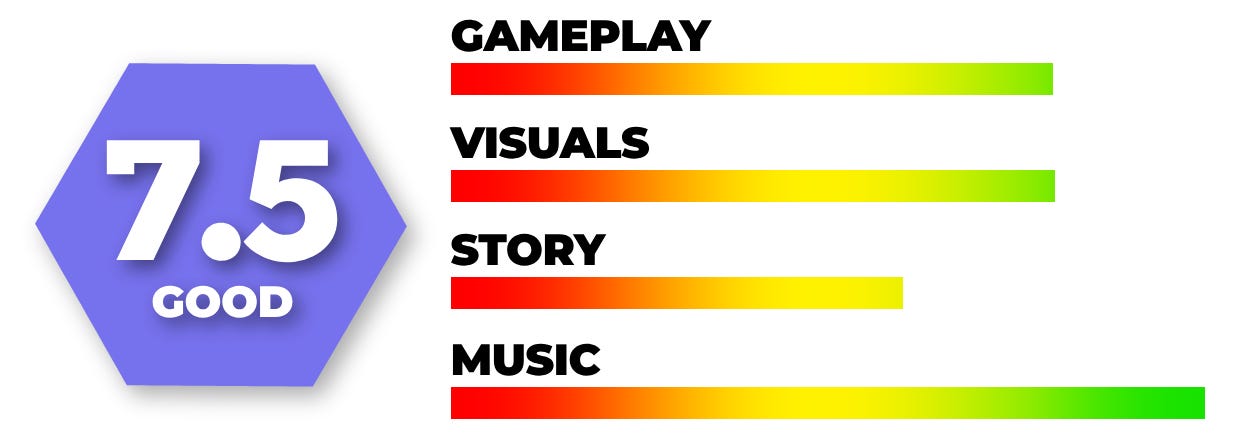Nostalgia Factor: Low. I’m a big Pokemon fan and enjoy card-battlers, but I had very little Pokemon TCG experience before playing this game.
Difficulty: Easy to Medium. Those unfamiliar with card-battlers may struggle a bit. Things become much easier once you acquire enough cards for a solid deck.


I had almost no experience with the Pokemon Trading Card Game (TCG) before playing this game. I was surprised to find myself very much enjoying the ride. I played a lot of Yugioh as a kid (and the GBA Yugioh games), and I played Hearthstone for years before I finally moved on from that, but I had never really spent the time to learn how to play the Pokemon TCG.
This delightful Game Boy Color game is an excellent way to learn the ropes and practice deck building using the earliest TCG card sets. Of course, you start the game with an absolute garbage deck, but you are given a generous amount of new cards each time you win a battle. It didn’t take long for me to start rolling over the easy opponents, farming up more and more powerful cards. This is an immensely satisfying process and something I really enjoy about PvE card battling games. I quickly found my style and enjoyed crushing all the NPCs once I had sufficiently strengthened my deck.
The visuals are solid — reminiscent of Pokemon Red/Blue/Yellow, with some very familiar sprites which look to have been recycled from Pokemon R/B/Y. Of course, the GBC is very limited, but they did a more than adequate job digitizing the card artwork for the game. The attack effects aren’t much to look at, but I found myself much more engaged with the gameplay of the duels than the visuals. The UI can take a bit to adjust to, but once you adapt, it’s serviceable.
There’s not much story here, and again, it feels recycled. There are eight medals to collect by defeating the leaders of eight clubs before you can challenge the four Grand Masters. You have a rival. He’s one step ahead of you the entire game. Sound familiar? Despite the copy-pasted story archetype, it’s fine. I still found myself satisfied at the end.
The AI was mostly foolproof. There were only a few times where I noticed my opponent making odd plays that didn’t bring any benefit. The final four opponents made full use of some tricky strategies involving the “legendary cards.”
The soundtrack from Ichiro Shimakura (Mario Party 3, 4, 7, Wii Party U) is way better than it has any right to be. This game was clearly a low budget cash grab intended to help sell Pokemon cards, but the game is still surprisingly fun (thanks to the solid design of the classic Pokemon TCG), and the soundtrack absolutely slaps. GaMetal even covered the battle music. Some of my favorite tracks are “Pause Menu”, and “Water Club”.
The game is fun, but it did feel a bit short, especially compared to the epic adventures to be had in Pokemon R/B/Y. It took about 10 hours for me to complete the main portion of the game. I didn’t bother grinding battles in order to collect the 40 cards I was still missing.
However, I was excited to find that there’s a sequel to this game. Pokémon Card GB2: Great Rocket-Dan Sanjo! was only released in Japan. I’ve heard it has more features and a much more developed story. A fan translation can be found here if you’re interested. I’m going to give it a go!
In case you’re interested in my final deck configuration:
(24) Water energy — I hate not having energy cards when I need them, so I run a lot of energy.
(1) Snorlax — He’s such a beast! He won me so many matches. Wish I had four.
(3) Lapras — Lots of HP and the ability to ramp up to 30 damage, a great starter.
(4) Seel
(3) Dewgong — 50 damage for only 3 energy? Probably the strongest common stage 1 Pokemon in this game.
(4) Goldeen
(3) Seaking — Very fast stage 1 option, 30 damage for only 2 energy.
(1) Magikarp — surprisingly rare?
(1) Gyrados — 50 damage for only 3 energy, but I only had one Magikarp.
(2) Psyduck — Would replace with more Magikarp/Gyrados if I could.
(3) Professor Oak — This card is so strong, a great way to reload or reset your hand if you’ve got nothing going for you.
(4) Bill — Free card draw!
(2) Poke Ball
(4) Potion — I think potions are underrated. They help you stay in control once you’ve got a strong Pokemon in play.
(1) Super Potion
I also used a fighting deck featuring Machop, Hitmonchan (so strong!), and Marowak to take out the Lightning Club. IMO, the water and fighting sets are the strongest in the game. I had much more success focusing on one energy type instead of running a hybrid deck.





